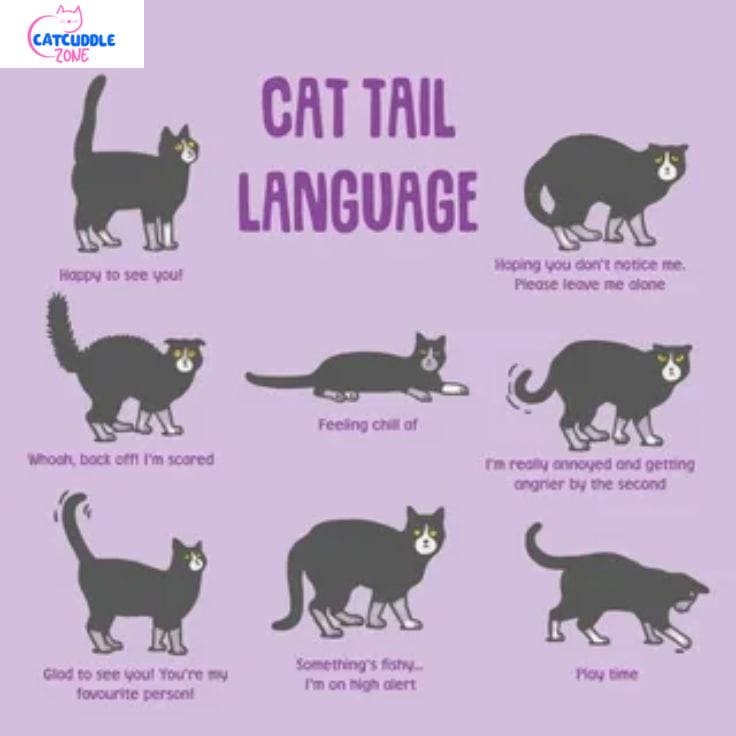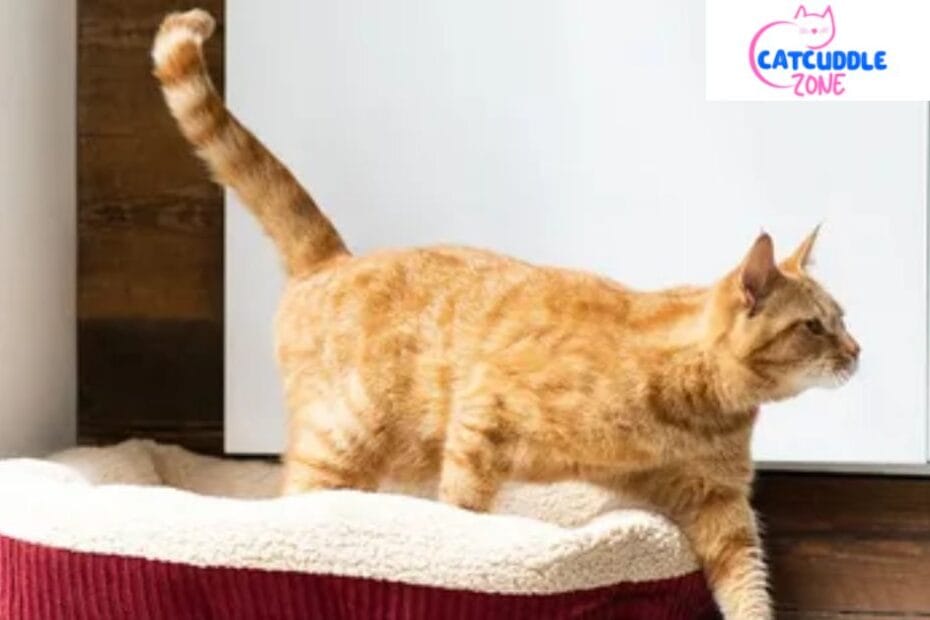Ever noticed your cat lying down and suddenly her tail starts moving? Wondering why do cats wag their tails while lying down can open a fascinating window into cat tail meaning and the secret world of feline communication. This gentle tail flick or steady tail swish isn’t random—it tells a story about mood, instinct, and hidden feelings.
Sometimes, it shows your cat is overstimulated and needs space; other times, it signals playful curiosity or contentment. By learning to read these subtle tail cues, you can understand your cat’s emotions better and build a closer, more trusting bond with your furry friend.
Understanding the Basics of Cat Tail Wagging
Cats rarely do anything without a reason. Tail wagging as communication is part of their rich feline communication style. Unlike dogs, cats don’t wag to show simple happiness. Each tail flick or tail swish carries meaning. From a confident cat posture with the tail high to a nervous bushy tail, these signals reveal cat emotions and intent.
Cats also use their tails to help balance. It’s especially clear during a hunting posture or quick turns. Balance and agility during hunting show how deeply rooted these movements are in feline instinct. The tail isn’t just an ornament; it’s a tool, a warning flag, and sometimes, a welcome sign.
What It Means When Cats Wag Their Tails While Relaxing or Sleeping
At rest, cats could be swishing their tails or thumping them on the ground. This is usually an indicator of an overstimulated cat or one who is slightly irritated. If you keep petting and notice the tail thumping gets faster, your cat is telling you, “Enough for now.” Respecting this message can help prevent cat aggression or scratches.
Sometimes, a tail wag while sleeping or dreaming is normal too. Cats might twitch their tails during deep sleep, much like humans move in dreams. If you call your cat and see a soft tail twitch shows curiosity or attention; he’s awake but choosing to stay cozy. It’s a subtle part of cat behavior when sleeping and shouldn’t worry you.
Cat Tail Wagging When Happy, Playful, or Excited
Cats wag tails when happy in ways that look different from dogs. You might see a gentle tail swish or the tip curled and flicking when they greet you. This relaxed wag hints at comfort and contentment. It’s part of playful tail gestures and a confident cat walks with tail held high.
During play, cats show excitement with a faster tail flick or sweeping motion. Think of the times you wave a toy, and your cat’s tail dances behind. It’s all part of cats swish tails when hunting or playing—pure joy and instinct in action.
Tail Movements When Cats Are Angry, Annoyed, or Scared
When cats get annoyed, their tail changes quickly. A slow tail swish can turn into sharp lashes or heavy tail thumping. You might spot a puffed-up tail as a defensive signal when they feel truly threatened. This reaction turns the tail into a warning sign, showing a threatened cat ready to protect itself.
Fear can also trigger a bushy tail that stands on end. This dramatic look makes the cat seem bigger and scarier. Learning these signs helps you calm the situation and avoid cat aggression or bites.
Hunting & Prey Drive: Why Cats Wag Their Tails While Hunting
A stalking cat often shows a focused tail swish or a low wag. It’s part of cat prey drive, inherited from wild ancestors. Even indoor cats in a hunting posture by the window will flick and twitch their tails when they watch birds or bugs.
Their tails help with balance and quick movement. Balance and agility during hunting make the cat a precise hunter. Watching your cat chase toys can feel like glimpsing a miniature tiger in your living room.
| Tail Sign | Likely Meaning |
| Slow swish | Mild irritation |
| Fast flick | Focused excitement |
| Puffed-up tail | Fear or threat |
| Curled tip | Relaxed, friendly |
Social and Affectionate Tail Gestures
Cats also use their tails for love and friendship. Wrapping a tail around another cat or you is a sweet cat affection sign. A gentle tail flick while lying close shows trust.
The classic confident cat walks with tail held high is another message. It’s like a smile, saying “I feel good here.” Learning to spot these gestures reveals your cat’s hidden feelings.
Unusual Reasons Cats Might Wag Their Tails
Sometimes tail wagging points to other issues. Cats may flick their tails due to fleas, itchy skin, or even nerve pain. A tail twitch with no clear cause could mean it’s time for a vet visit.
Stress also makes cats move their tails more. In a multi-cat household, tension can build silently. Using natural cat pheromones for stress relief or a pheromone diffuser can help ease cat emotions and stop restless tail flicks.
Tips to Respond to Your Cat’s Tail Language
Notice what your cat’s tail does right before a change in mood. If a relaxed tail flick turns into faster tail thumping, step back. This keeps play safe and fun. Offer toys instead of hands, so excitement stays harmless.
When a cat seems anxious, calming overstimulated cats works best with cat calming products or gentle routines. Creating a calm space makes your cat feel secure.

Learn to Read Your Cat Better: Strengthen Your Bond
Every cat’s tail language is unique. Watch how your cat reacts when happy, annoyed, or sleepy. You’ll see a pattern in decoding cat tail signals. Over time, you’ll spot a soft tail twitch shows curiosity or attention or a defensive puffed-up tail as a defensive signal before it turns serious.
Reading these signs builds trust. A cat who feels understood becomes calmer and friendlier. Knowing why cats wag or thump their tails isn’t just trivia—it’s the start of a closer friendship.
Conclusion
Finally, the reason why cats wave or bang their tails turns out to be a secretive, instinctive, and message-filled world. When you are closely observing every tail flick or swish, you learn more about who your feline friend is. This wisdom not only defines cat tail language but also creates an attaining relationship based on trust, respect, and love.
(FAQs)
Why is my cat flicking her tail while lying down?
When your cat is flicking her tail while lying down, it often shows she’s overstimulated or a bit annoyed and wants some space.
What does it mean when a cat lies down and wags its tail?
If a cat lies down and wags its tail, it may mean she’s feeling playful, irritated, or deciding what to do next — it’s part of her feline communication.
What does tail swishing mean in cats?
Tail swishing usually signals excitement, curiosity, or intense focus, like when watching prey or during play fighting.
Are cats happy when they wag their tail?
Cats can be happy when they wag their tail, especially if it’s a slow, gentle wag paired with a confident cat posture like a tail held high.
